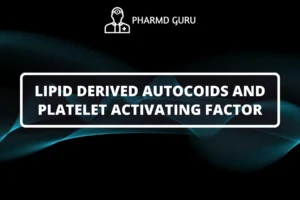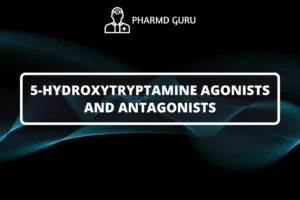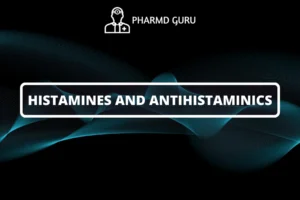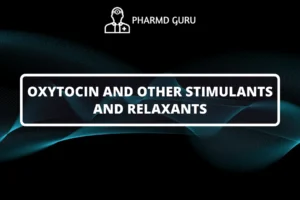Hyperlipidemias refer to elevated levels of lipids (fats) in the blood, particularly cholesterol and triglycerides. High cholesterol levels are a significant risk factor for cardiovascular diseases, including heart attacks and strokes. Lifestyle modifications, such as a healthy diet and regular exercise, play a vital role in managing hyperlipidemias. However, in some cases, medications are necessary to achieve optimal control. In this article, we will explore the drugs commonly used in the treatment of hyperlipidemias, their mechanisms of action, and their role in lowering cholesterol levels.
SCROLL DOWN TO THE BOTTOM OF THIS PAGE FOR ACTUAL NOTES.
TABLE OF CONTENTS:
- Introduction
- Types of Hyperlipidemias
- Classes of Drugs Used in Hyperlipidemia Therapy
- Statins
- Ezetimibe
- PCSK9 Inhibitors
- Bile Acid Sequestrants
- Fibrates
- Niacin
- Combination Therapies
Introduction
Hyperlipidemias are characterized by high levels of lipids in the blood, primarily cholesterol and triglycerides. These conditions can increase the risk of cardiovascular diseases, such as atherosclerosis, heart attacks, and strokes. Lifestyle modifications, including a healthy diet, regular exercise, and weight management, are the cornerstone of hyperlipidemia management. However, medications are often required to achieve target cholesterol levels and reduce the risk of cardiovascular events.
Types of Hyperlipidemias
Hyperlipidemias are classified based on the specific lipid abnormalities present. The two most common types are:
- Hypercholesterolemia: Characterized by elevated levels of low-density lipoprotein cholesterol (LDL-C), often referred to as “bad” cholesterol.
- Hypertriglyceridemia: Marked by elevated levels of triglycerides, another type of fat in the blood.
Both types of hyperlipidemias require intervention to lower lipid levels and reduce the risk of cardiovascular complications.
Classes of Drugs Used in Hyperlipidemia Therapy
Several classes of medications are used in the treatment of hyperlipidemias. These drugs work through different mechanisms to lower cholesterol and triglyceride levels. Here are some of the most commonly prescribed drug classes:
Statins
Statins, such as atorvastatin and simvastatin, are the most widely prescribed medications for managing hyperlipidemias. They work by inhibiting an enzyme called HMG-CoA reductase, which is involved in cholesterol synthesis. By reducing cholesterol production in the liver, statins help lower LDL-C levels and, to a lesser extent, triglyceride levels. They can also modestly increase high-density lipoprotein cholesterol (HDL-C), known as “good” cholesterol.
Ezetimibe
Ezetimibe is a medication that reduces cholesterol absorption in the intestines. It works by inhibiting the absorption of dietary cholesterol and cholesterol released from bile. By lowering cholesterol uptake from the gut, ezetimibe helps reduce LDL-C levels.
PCSK9 Inhibitors
PCSK9 inhibitors, such as evolocumab and alirocumab, are a newer class of medications used for hyperlipidemia management. They work by inhibiting PCSK9, a protein that plays a role in regulating LDL receptor recycling. By blocking PCSK9, these medications increase the number of LDL receptors available to clear LDL-C from the bloodstream, leading to significant reductions in LDL-C levels.
Bile Acid Sequestrants
Bile acid sequestrants, including cholestyramine and colesevelam, bind to bile acids in the intestines, preventing their reabsorption. This stimulates the liver to use more cholesterol to produce new bile acids, leading to a reduction in circulating LDL-C levels. Bile acid sequestrants are often used in combination with other lipid-lowering medications.
Fibrates
Fibrates, such as fenofibrate and gemfibrozil, primarily target elevated triglyceride levels. They work by activating a receptor called PPAR-alpha, which regulates the expression of genes involved in lipid metabolism. Fibrates can lower triglyceride levels and, to a lesser extent, increase HDL-C levels.
Niacin
Niacin, also known as vitamin B3, can lower LDL-C and triglyceride levels while raising HDL-C levels. Its mechanism of action is not fully understood, but it is thought to involve inhibition of triglyceride synthesis and increased HDL production. Niacin is often used in combination with other lipid-lowering medications.
Combination Therapies
In some cases, combination therapy may be necessary to achieve optimal lipid control. Healthcare professionals may prescribe a combination of medications from different classes to target multiple lipid abnormalities and maximize the overall lipid-lowering effect. Combination therapies are often used in patients with very high cholesterol levels or those who are at high risk of cardiovascular events.
ACTUAL NOTES:




